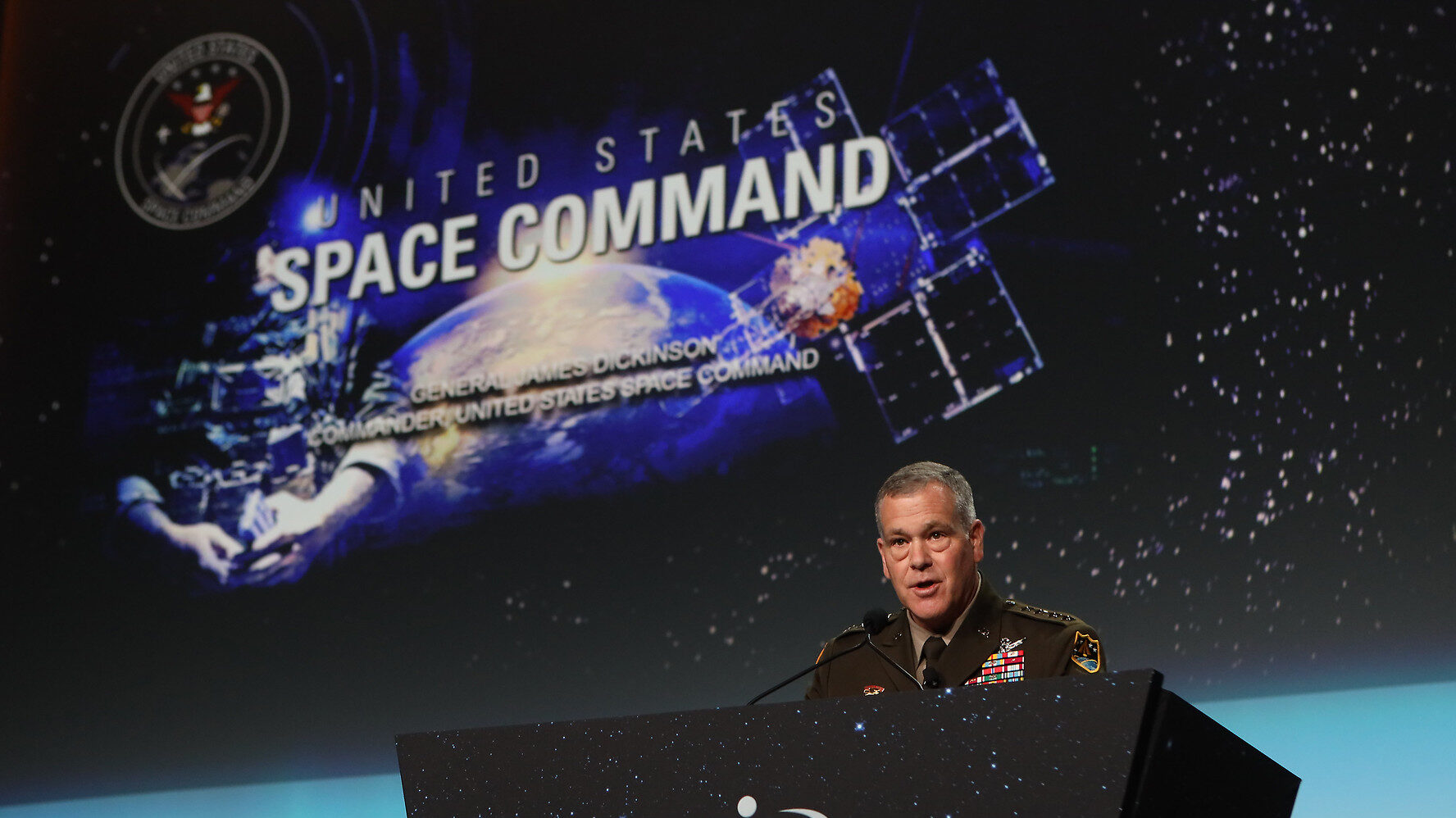
Gen. James H. Dickinson, Commander, U.S. SPACECOM, speaks at the 2022 Space Symposium. (Credit: Space Foundation)
SPACE SYMPOSIUM: Space Command envisions three “ways” to implement its new Commercial Integration Strategy: shifting acquisition toward specific near-term requirements, debuting the use of “leases” for services (rather than buying systems), and bringing in expertise through strengthened relationships with industry.
While the strategy itself is classified, the SPACECOM today released an unclassified fact sheet overviewing the goals and how it intends to get from here to there, as well as the technological areas the command intends to prioritize in seeking commercial assistance.
SPACECOM head Gen. Jim Dickinson told reporters at the Space Foundation’s annual Space Symposiurm today that first in a long line of commercial capabilities to be leveraged is space domain awareness (SDA) — that is, being able to understand in near real time what is going on in space, including potential potential threats.
“Having the commercial industry contribute to that critical mission area for me is absolutely where we have to go,” Dickinson said.
RELATED: Space Force works, slowly, to improve monitoring of the heavens
He explained that SPACECOM has long had a relationship with selected space companies via the Commercial Integration Cell (CIC), which falls under the Combined Space Operations Center (CSpOC) located at Vandenberg SFB in California. However, he said, the that framework isn’t fit for purpose given the changes in the space environment and needed to be re-examined.
“I looked at what the framework was that we were operating off of for many years out of Vandenberg, and said, ‘We probably need to change that,’ because the times have changed, the capabilities by the industry have changed,” he said. “And many more companies are providing those services, or that capability.”
Thus, Dickinson said, the command “took a look back” to figure out how to improve. “How can we make it easier, more efficient, more feasible for a commercial company to enter into, you know, into an agreement with us and participate, for example, in space domain awareness,” he said.
Indeed, SPACECOM for the last year was in a bit of a strategic hiatus — including refraining from adding more companies to the CIC — while it worked out the new commercial strategy, according to one insider. (CIC today comprises 10 corporate members: Eutelsat America Corp., Hughes Network Systems, Inmarsat, Intelsat General Communications, Iridium Communications, Maxar Technologies, SES Government Solutions, Viasat, XTAR and SpaceX.)
SPACECOM naturally will have to work with the Space Force, the Department of the Air Force, and the Department of Defense, Dickinson explained, to ensure that acquisition efforts are aligned with the new strategy and targeted at the command’s defined requirements.
“We’re maturing our process, and we have put requirements onto the department,” he said, “and then we we become a very demanding customer.”
The unclassified fact sheet broke down priority commercial technologies needed alongside the methodologies SPACECOM sees for being able to bring them to operators:
- “Way 1” will focus on setting requirements for specific systems and using “accelerated acquisition” for things like “command and control battle management,” information technology, space control systems and satellite communications (SATCOM terminals).
- “Way 2” will focus on obtaining services, through leases or long-term contracts, for SDA, SATCOM bandwidth, remote sensing and defensive space control.
- “Way 3” will be working early and often with industry to bring in expertise, “in ways that are more relational as opposed to purely transactional.”






















